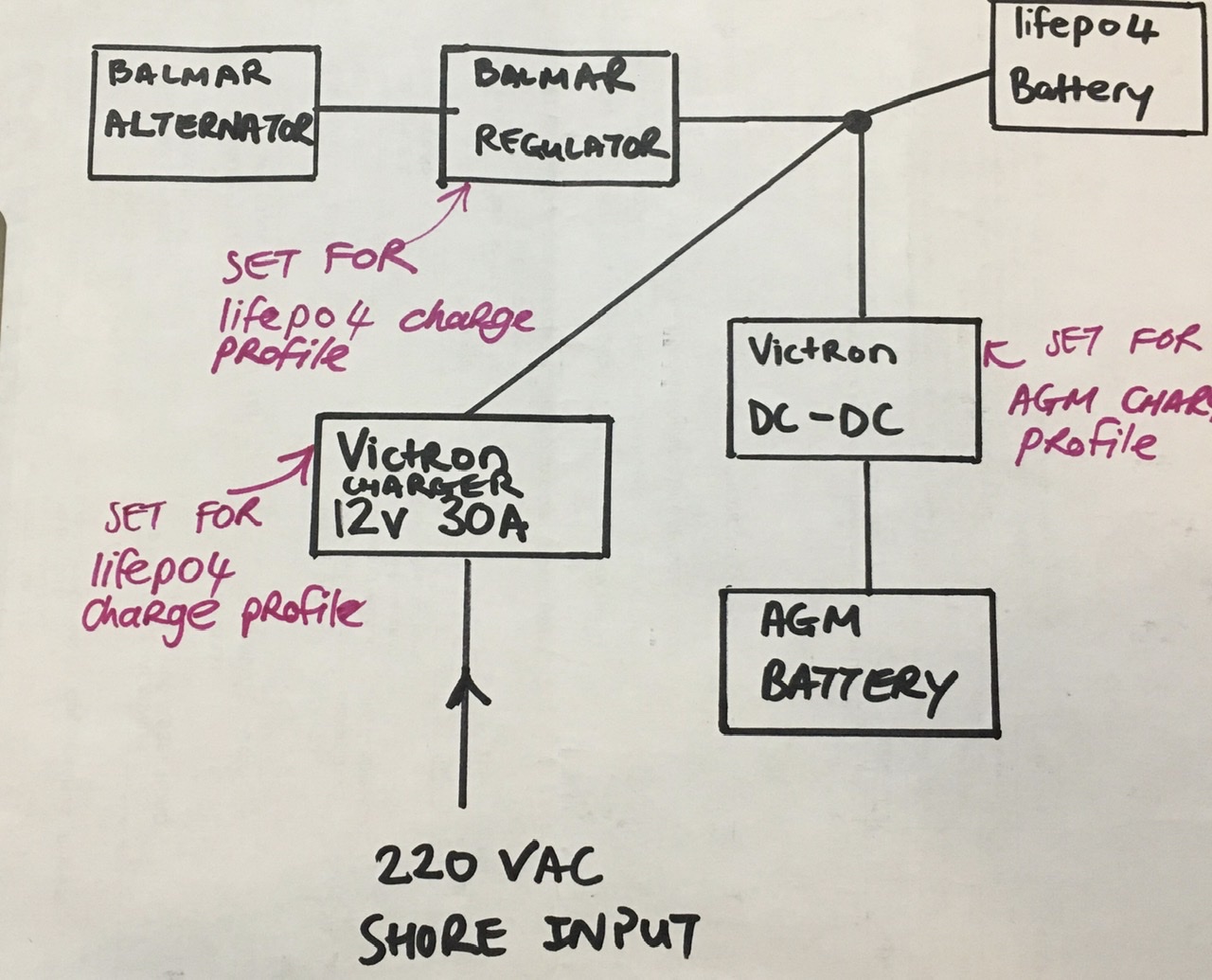I have two questions relating to charging a lead acid battery with a lithium charge profile. On the vessel there will be 1x lead acid starting battery and 1x lithium house battery. The alternator will be upgraded to a Balmar unit with its own external regulator, programmed to a lithium charge profile. There will also be a Victron blue smart charger for shore power charging, I will set this charger to the lithium profile too.
This means the lithium house battery will be getting an optimized lithium charge from the alternator as well as the shore power charger, but the lead acid will also be getting this same profile. Is this okay for the lead acid battery and what is the potential disadvantages to the lead acid?
Relating to the configuration mentioned above, with the alternator charging, I assume a splitting diode for the charge is the best option rather than a charge relay?
I want to keep the system as simple as possible with the least amount of components and avoid dc-dc chargers as I want to utilize the full amps the alternator can give.

